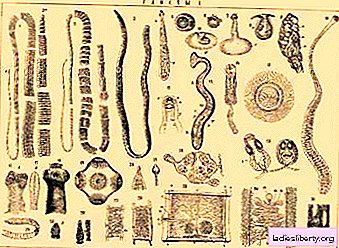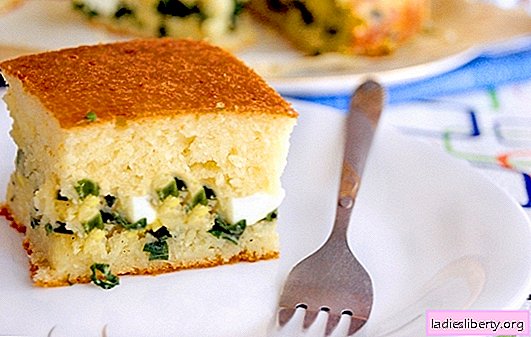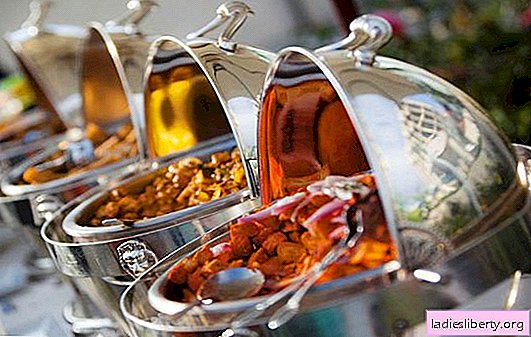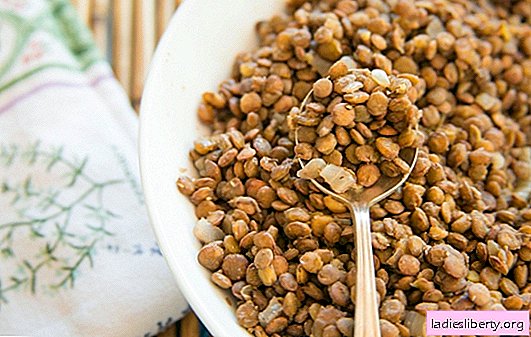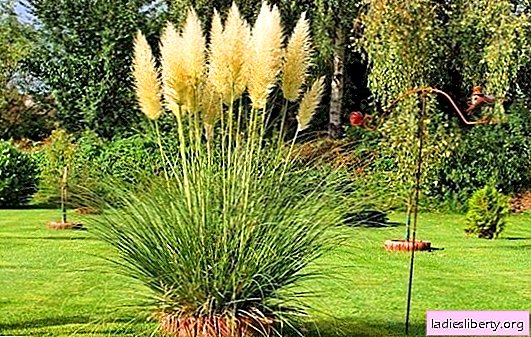
Pampas grass, among botanists better known as cortaderia, is a native of South America. A particularly decorative look of fluffy panicles is appreciated in Australia, Europe and North America.
In some countries (for example, New Zealand) pampas grass is considered an invasive species that can harm other representatives of the flora. These fears are not in vain: the cortaderia is easily acclimatized in any locality, and during its existence, one bush gives life to a million seeds.
Planting pampas grass: the nuances of growing cortaderia
Pampas grass is a cereal perennial that, with proper care, will delight the owner of the site for many years. The average height of a plant towering above a tussock is 3-4 meters. The decorative view of the cortaderia is made up of beautiful, narrow (no more than 2 cm) and long (up to 2 meters!) Leaves, and huge inflorescences. From the silver-gray or bluish deciduous fountain, from the very center of the turf, many fluffy inflorescences stretch upward. The flower stalk reaches 2-3 meters, and the panicles themselves, depending on the variety, have white, silver, less often yellow or purple shades, “fluff” 30-40 cm. The peak of decorative grass falls on the end of summer: the cortaderia blooms in August, and pleasing to the eye until November.
The plant is valued not only for its appearance, but also for its unpretentiousness. In the homeland, in the pampas, this herb does not need to be taken care of, although it was from there that the varieties that are now cultivated by gardeners were taken out. For some two years, the cortaderia grows into a beautiful bush - and this is in the middle zone of Russia, where winters are sometimes not as mild as we would like. In warmer southern regions, pampas grass can be sown immediately in the beds, choosing a fine autumn day for this, but in the northern regions this is unacceptable - the seeds will simply freeze out and a beautiful plant cannot be obtained. However, in regions with a harsh climate, there is a chance to acquire a fluffy beauty: for this they resort to the seedling method of sowing.
For planting, you can use any universal soil, but you must not forget about the mandatory stratification of seeds of pampas grass: about 1.5-2 months before sowing, the material is kept at low temperature to harden the cortaderia and increase its germination. You can put them in the refrigerator right in the bag in which they were bought, and this is best done in the first half of January. After waiting for the set time, you can start sowing.
A shallow container is prepared for seedlings. No special preparation for the soil is required - just moisten it from the spray gun. Seeds are sprinkled with a thin layer of soil, and the container is closed with polyethylene and put in a warm place. It remains only to wait, but not for long - after a couple of weeks, the first shoots will delight the gardener with delicate greenery.

The advantage of the seedling method is that young plants, even in the first few years and will not be able to acquire lush foliage and plentiful inflorescences, will still be much stronger than their counterparts, seeds planted in open ground. All weather vortices will be unimpressed by the strengthened pampas beauty - it will survive.
As for the care of seedlings of cortaderia, even a beginner grower will cope with it. Young shoots require only timely, modest watering, and good lighting. If it is not possible to place the seedlings in a sunny place, then the organization of additional illumination will not be superfluous: the cortaderia will only say thank you. After several pairs of true leaves appear, you can dive. No special care is required: the root system of the pampas grass develops well and is powerful enough to withstand even a few transplants.

Due to this property, missed irrigation will not have any serious impact: the cortaderia easily tolerates even prolonged drought, but still you should not make a cactus out of it and deprive it of legal moisture.
Pampas grass: care after planting in open ground
Seedlings can be transplanted to a permanent place only when the threat of night frost passes: a guest from South America, although unpretentious, will not be safe from safety. In the same period, turf can be divided by propagating the mother bush.
Cortaderia grows quietly both on sandy or rocky soil, and on chernozem. The main thing for the plant is the abundance of sunlight, so try to choose a site for planting so that the plant most of the day is in the open sun. It is advisable to choose a place so that in the near future pampas grass does not have to be replanted: since the root system develops very quickly, it will be problematic to dig out the whole bush. If the pieces of the rhizome remain in the ground, then a surprise will soon await the gardener: the cortaderia will gain strength and grow safely from the pieces. It is very difficult to get this grass out: a superficial “haircut”, or even burning, will not bring any benefit - you can destroy extra bushes only with the help of chemical weeding.

So, the plant found its place in the flower garden. Young bushes of cortaderia are recommended to be watered no more than once every 10-15 days. After a few years, their root system will penetrate so deeply that it itself will produce moisture to the plant, absorbing groundwater. This also explains the only top dressing of the year - in the spring, when pampas grass begins to gain strength.
In general, care for cortaderia comes down to timely watering, fertilizing, and pruning before winter. Inflorescences and leaves are cut, leaving about 30 cm from the ground. The indisputable advantage of pampas grass is that it is not afraid of fungi or bacteria, and garden pests bypass the hardened beauty, therefore, it does not require any specific treatment of cortaderia.
Wintering pampas grass: plant care in the cold season
It definitely won’t be possible to answer - the wintering of the cortaderia directly depends on the area in which they want to leave it in the open ground, and the varieties of grass. If this is the middle lane, then no problems will arise, but those who live in areas with more severe climates will have to tinker a bit. The first option is to organize a good shelter for the cortadery. In late autumn, the plant is pruned and the leaves are wound into a bunch. The bush is fenced with a grid, filled with any mulch, and on top they are additionally covered with covering material to protect the roots.
Another way is to grow pampas grass in a container way. In this case, the plant spends the winter in a warm room, being transplanted into a spacious container, and in the summer again “moves” to the garden. Just worth considering. that with this method, you can not wait for the declared decorativeness and size from the grass.
Site landscape and pampas grass: planting solo or for background
Cortaderia is an ideal plant for emphasizing a particular site. Alone, it looks great on an even lawn, or becomes the background for a mixed flower garden.
An architectural plant perfectly complements ponds, and pampas grass is often used to decorate them. It should be borne in mind that it requires a lot of space, so it is not recommended to plant bushes near paths or game zones in order to avoid cuts on long sharp leaves.


